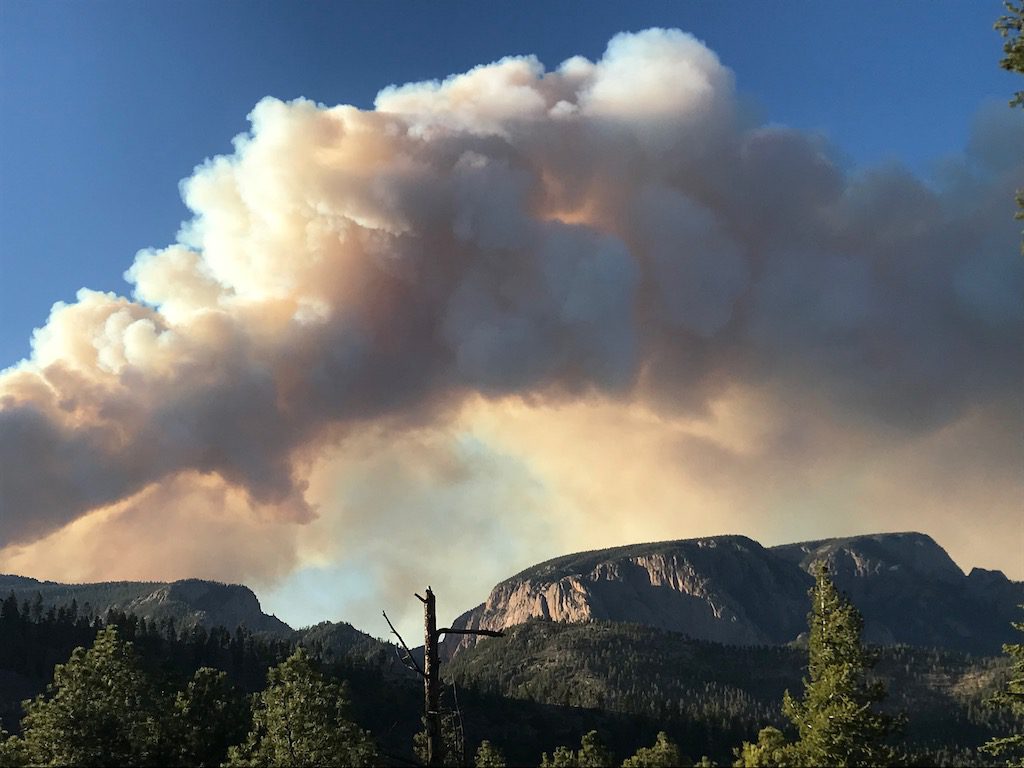
We left the Gathering of Nations Powwow early when news of the fire’s erratic behavior reached us. As we drove up to our home, Story Ranch, we saw the increased smoke and glow in the distance. Ready Set Go were the three stages of fire readiness. Ready meant to gather your precious items, fireproof your home in such ways as pulling interior wood and fabric items away from the window, clearing your porches. Set meant that you should be prepared to evacuate in a matter of minutes. Go, well, go means leave right now. In our valley, the first two stages had never been declared. Most of us were unprepared.
Three weeks into the fire and we had already grieved close friends’ losses of hand-built homes that had disappeared in smoke. Hundreds had evacuated their homes. Traditional, land-based community members were scattering to the safety of friends, relatives or newly created evacuation centers. Generational adobe, stone and log homes along with newer minted structures, forests and fields were being threatened. And now it was our turn.
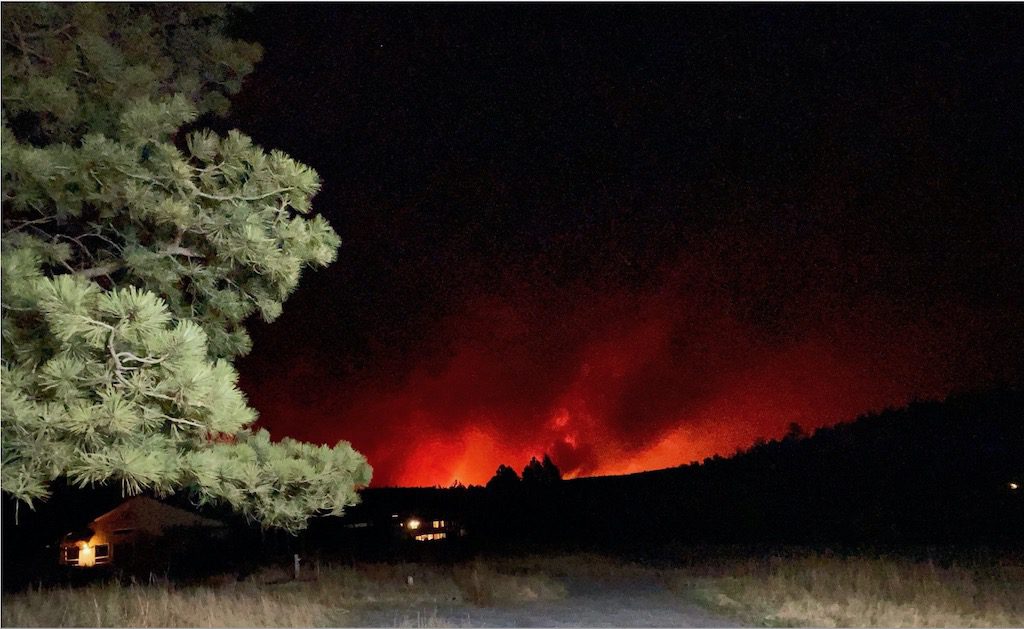
Shortly before midnight, the state police roared up driveways, sirens blaring, and announcing the necessity to leave. A fast-moving band of fire and tree flare-ups on the ridges beyond us were evident as we loaded our boxes of key paperwork, clothes thrown in trash bags, musical instruments, a few of our two daughters’ paintings, two dogs, three geese, eight goats and one pregnant one packed into the back of our pickup truck. The newly liberated chickens remained behind.
At this moment, we directly and personally entered the growing multitudes of climate evacuees. Such an event was not unexpected. Our forests had become drier than kiln-finished lumber. If you struck 100 matches and dropped them to the ground, 90 to 94 of them would ignite a fire. Precipitation had become a long-lost friend. The link of a warming climate to such a cataclysmic event was evident throughout the region long before the fire drew its first breath.
Two nights later and ninety miles from our home and grateful to be at a farm, our pregnant goat, Ilora, gave birth to two healthy babies.
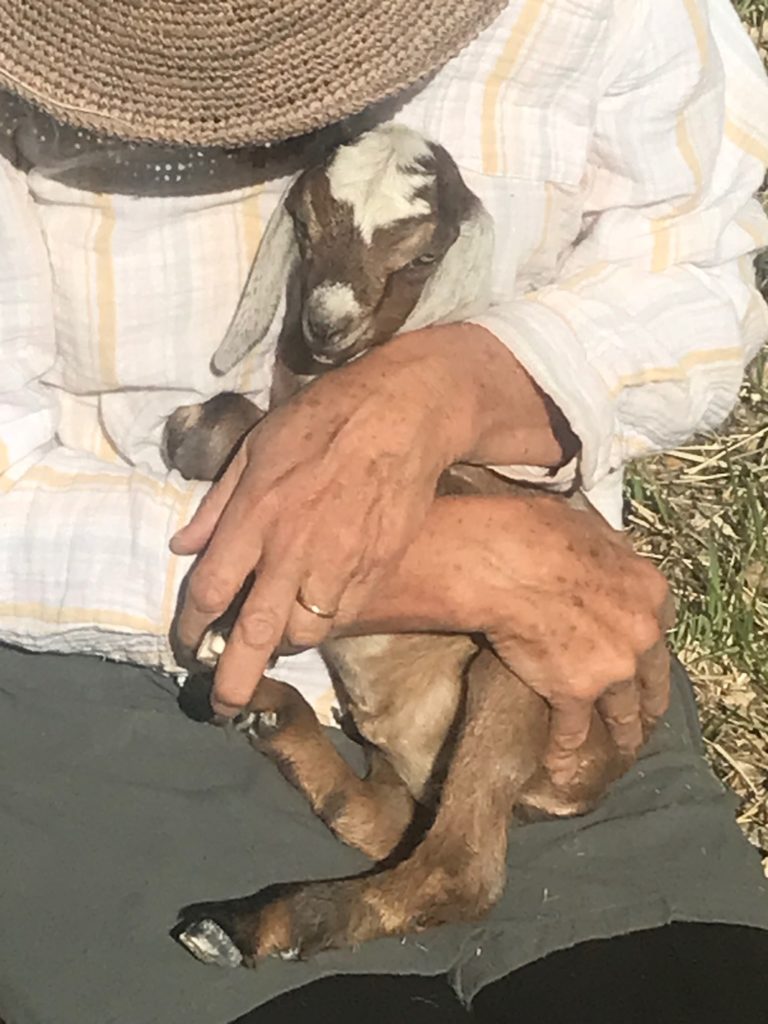
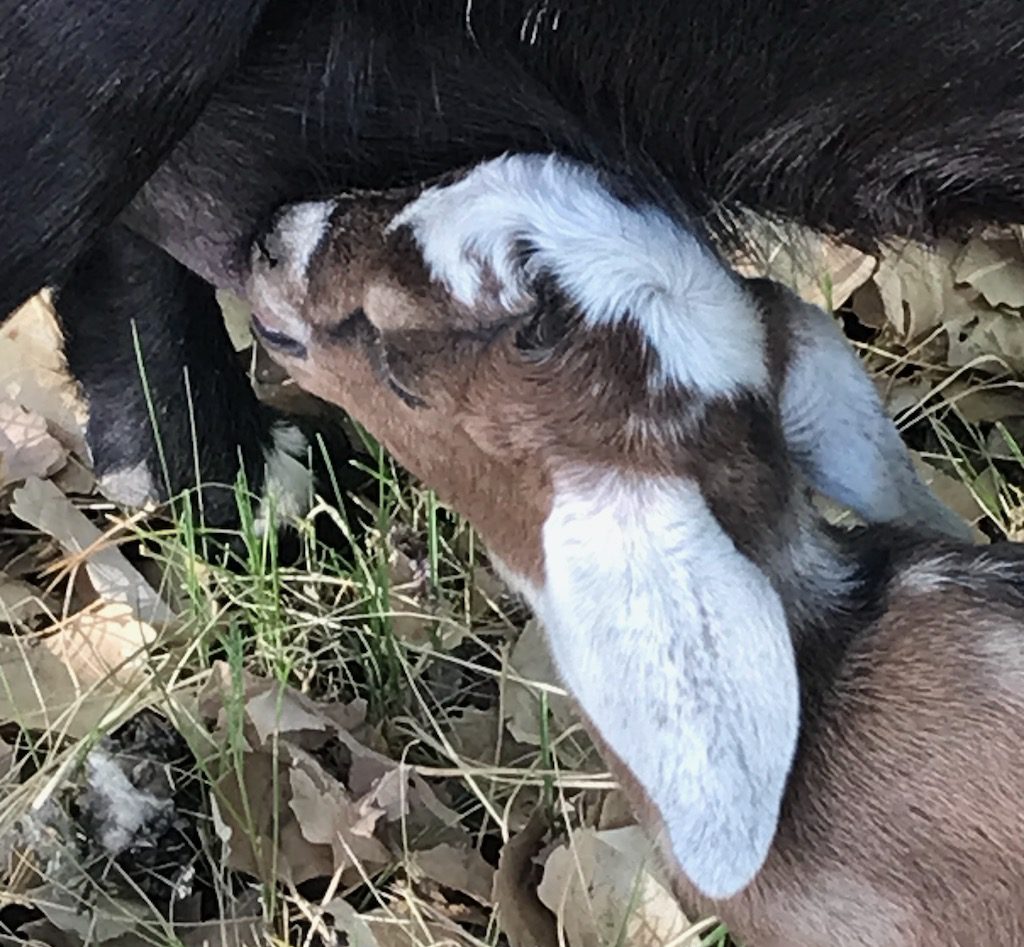
The spark that lit this monstrous fire was our federal Forest Service’s ironic attempt to ignite a “controlled burn.” This fire we fled, the Calf Canyon/Hermit’s Peak, was becoming the largest wildfire in New Mexico’s history, a fire that eventually devoured 350,000 acres and over 900 structures. Fire suppression efforts would reach over 3,000 personnel who fought unprecedented winds, high temperatures and extreme low humidity. Along with countless hours of frontline firefighting, members of our local volunteer fire department, Cabo Lucero Fire Department, were instrumental in providing local knowledge and protection of the roads, homes, structures and land.
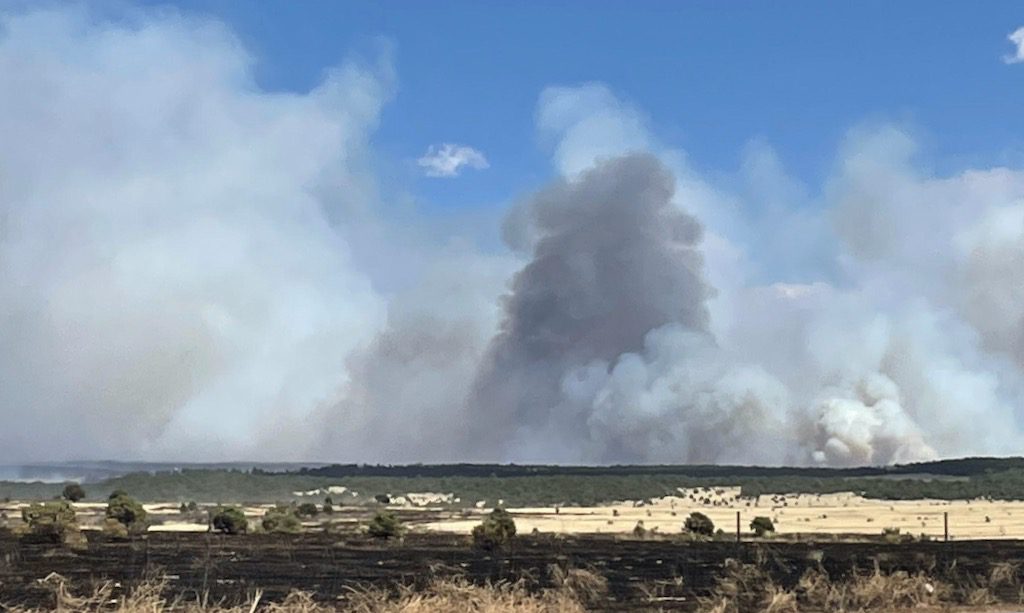
For thirty days, our mandatory evacuation and the sheriff’s checkpoints kept us at a distance from our home. Eight times during that month, we traveled the four-hour round trip to be near—to watch with other neighbors from a high point as the fire ate our valley and distant mountain range. Sometimes we were lucky. Once, two medics that we flagged down offered to regularly water our greenhouse and feed chickens. Such gratitude.
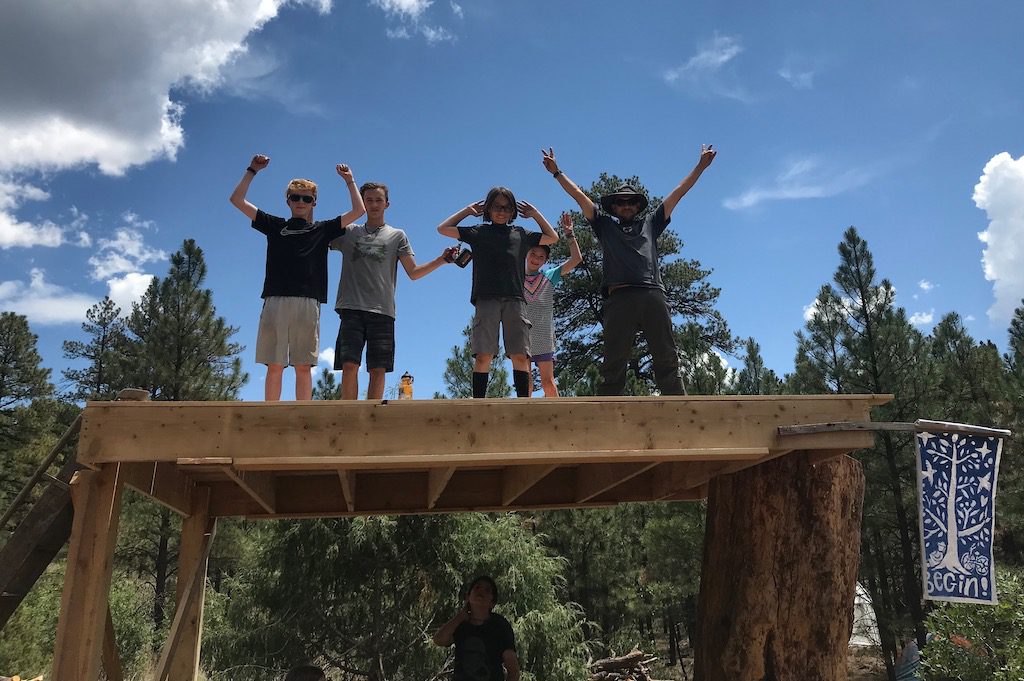
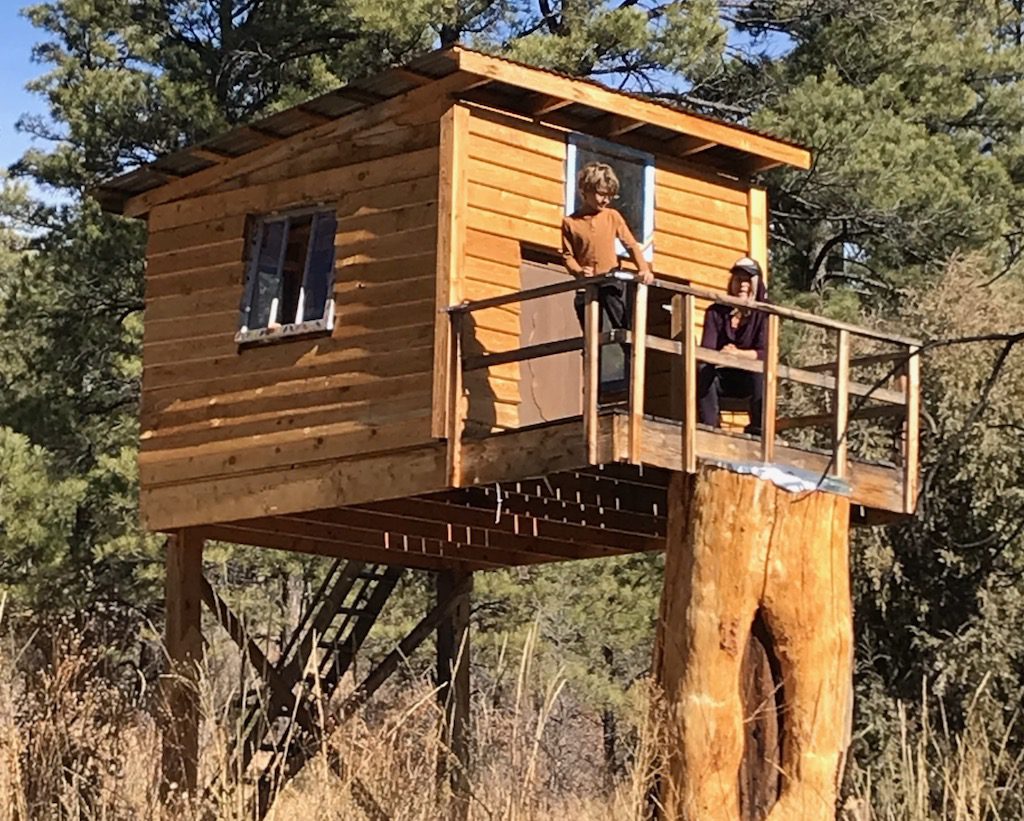
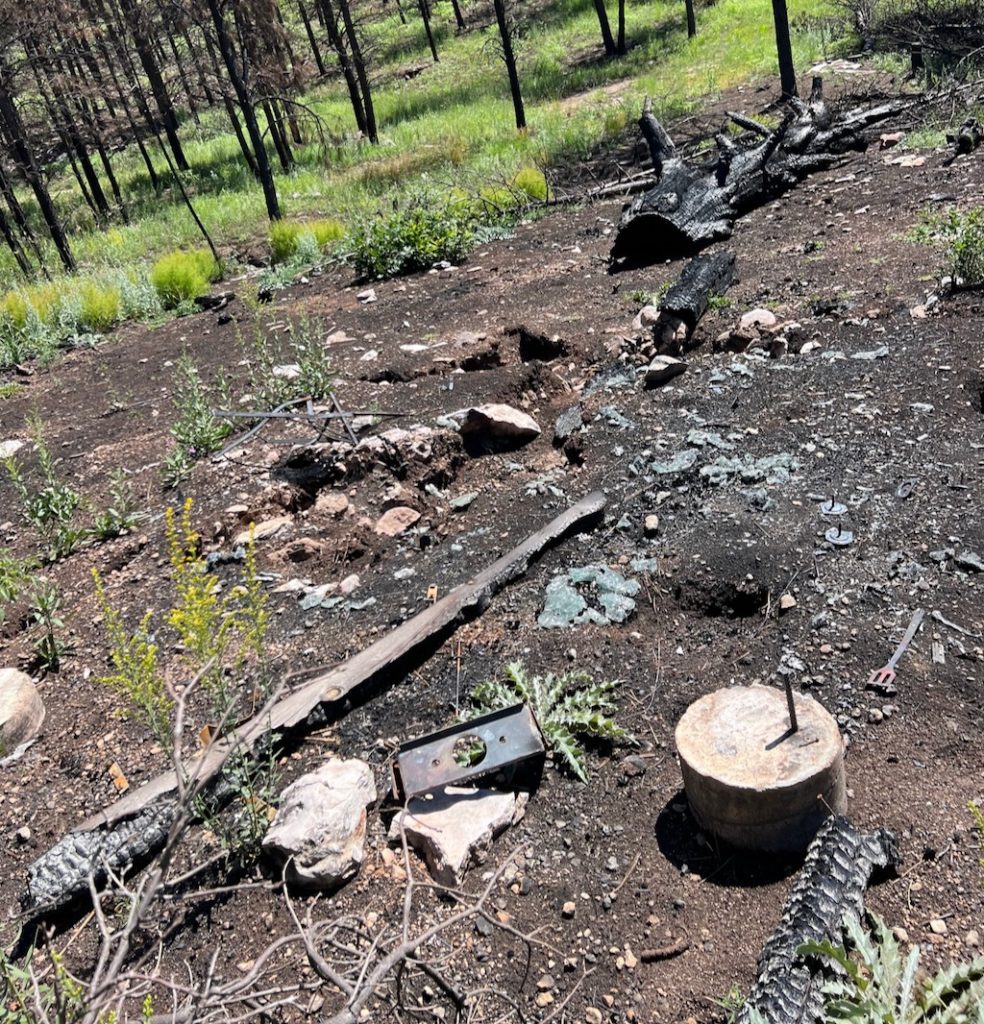
Another time, after the first fire passed through the land, we snuck in through backroads to reach the ranch. A quick assessment showed the loss of several structures including our youth-constructed treehouse, but our main home and barns were standing. We were able to retrieve our 32 chickens and find a temporary home for them.
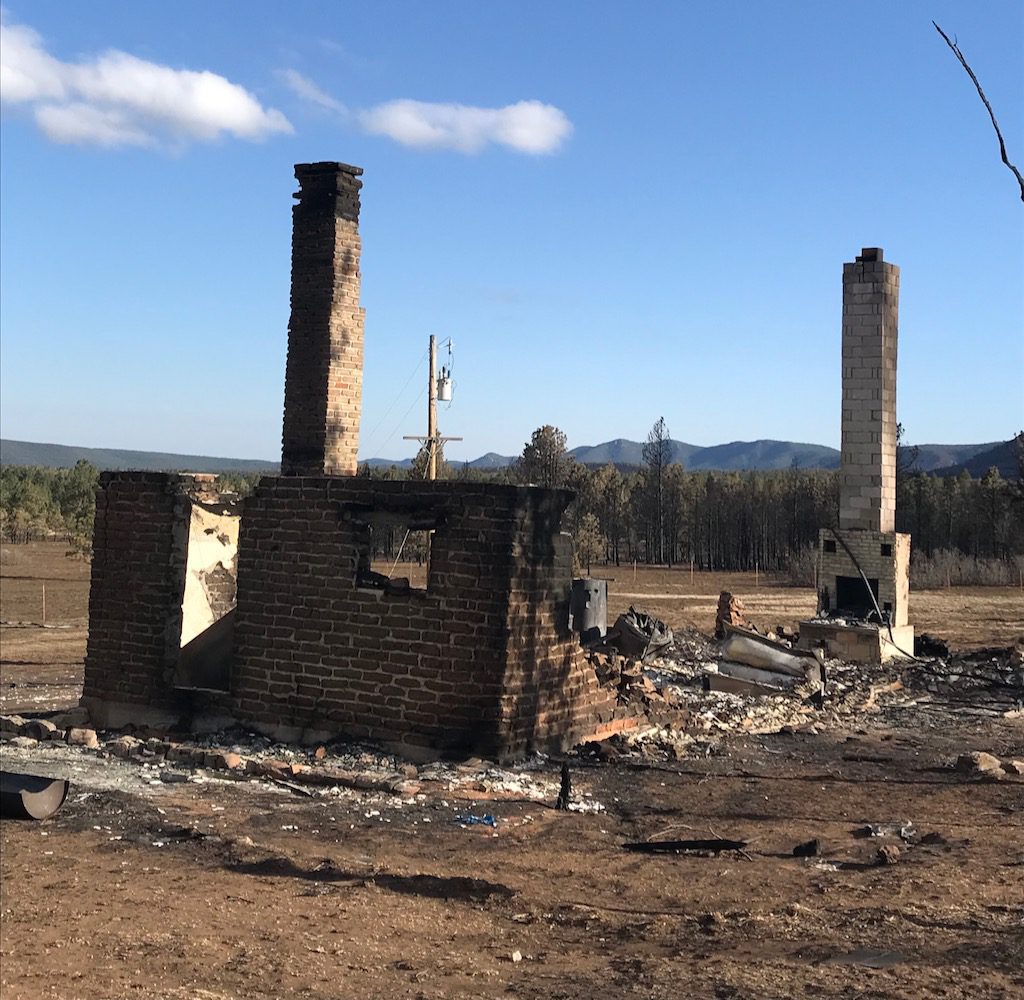
During the evacuation, the fire passed through our valley two more times, the second being the most intensive and damaging. Accounts by two neighboring brothers who chose to stay to protect their family ranch were horrifying, with 200-foot walls of fire spouting fire bombs that exploded on impact. Escape became impossible as their car lights were unable to penetrate the thick smoke and ash. Within a mile or two of our home, fifteen homes were reduced to ashes that night. Areas of forests were ravaged.

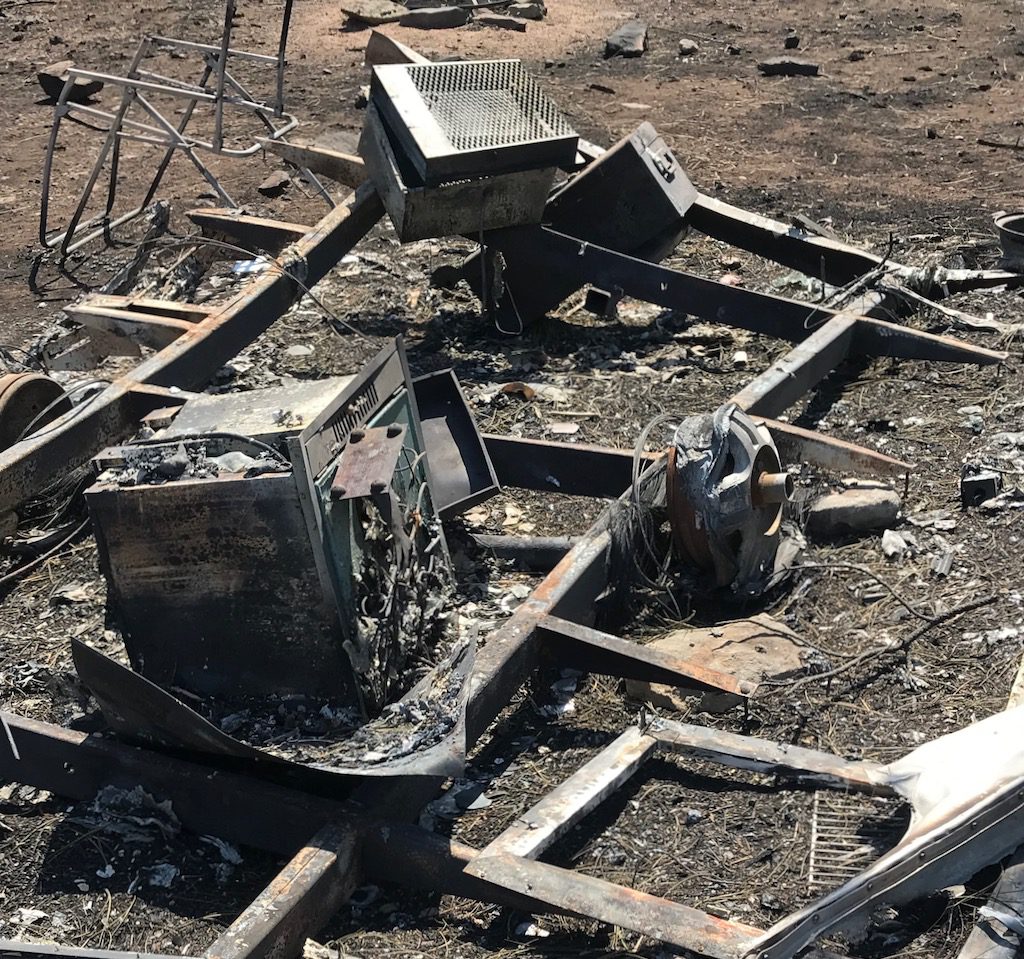
On our next attempt to visit our home, we were allowed through the roadblock to bring hay to a neighbor’s sheep. The scene was devastating, still smoldering from the recent pass of fire. On our land, gone were six outhouses, the potable water system, two vintage trailers, an outdoor kitchen, our tree house, four 18-foot domes, as well as the Billy Goat Robert’s Museum created to acknowledge prior history of the land. The dozer line put in by firefighters had held back the fire from our primary buildings and gardens. The beehive and bees had survived with the fire passing directly under them. And we were the lucky ones. Such a mixture of grief and gratitude.
Anyone familiar with wildfires will know that floods often follow fire imprints. The soil becomes hydrophobic, meaning resistant to water. Instead of the absorbing function of healthy forest floors, the burned surface acts more like concrete than the sponge it normally mimics. A one-inch rainfall within one hour can have catastrophic results downstream from the watershed. Predictions by the forestry personnel was that flooding could reach three to four times the historical highs. To prepare we needed to find ways to disrupt the water paths and hold back debris and ash.

Gratefully, Steve Reichert, a neighbor, was masterful at envisioning such features. On a walk along our likely water flows, Steve pointed out twenty spots where a variety of techniques utilizing straw bales, rock, sand bags, and tree limbs could be useful. Story Ranch put out a call for help. Twenty-five friends of the ranch arrived on a Saturday morning, post-fire and pre-flood. One hundred straw bales, eighty sand bags, tree branches, logs, stones, stakes, and a whole lot of love built an impressive series of features to protect the land from further degradation.
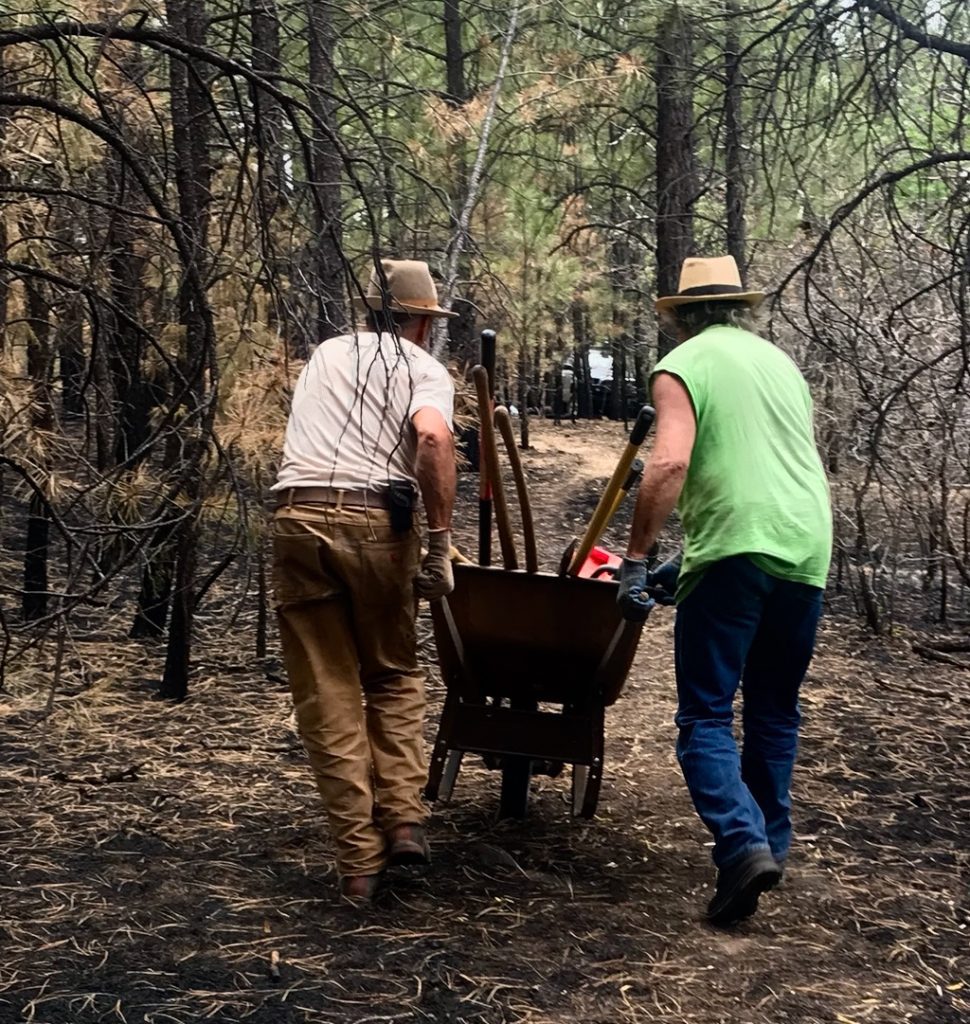
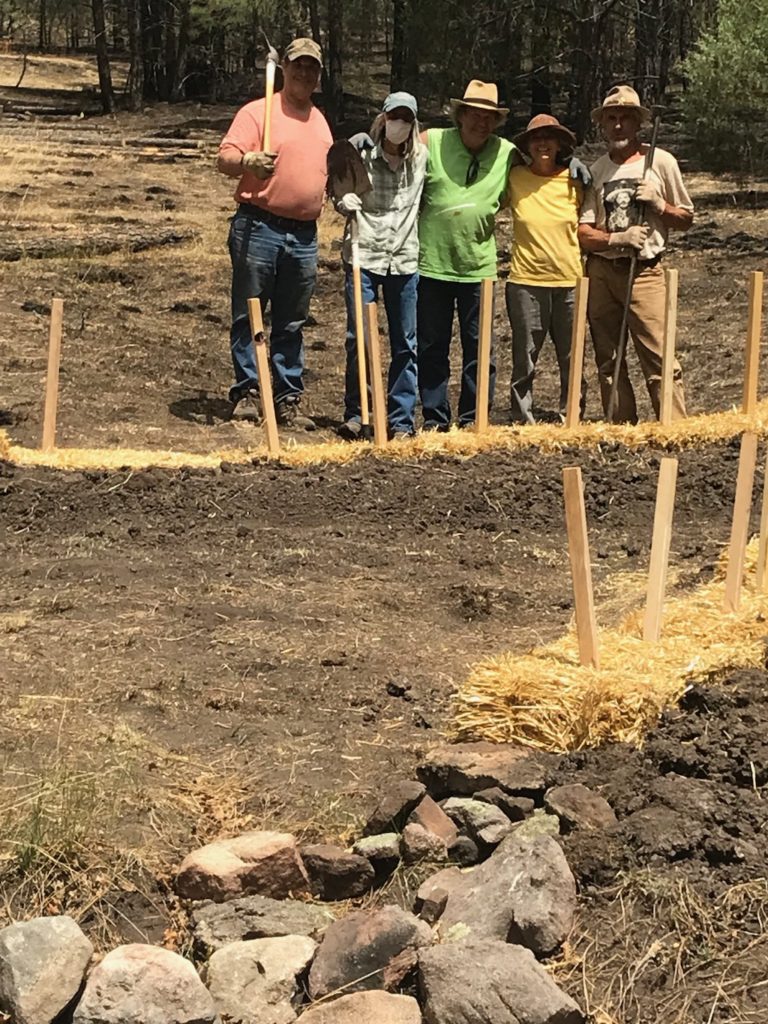
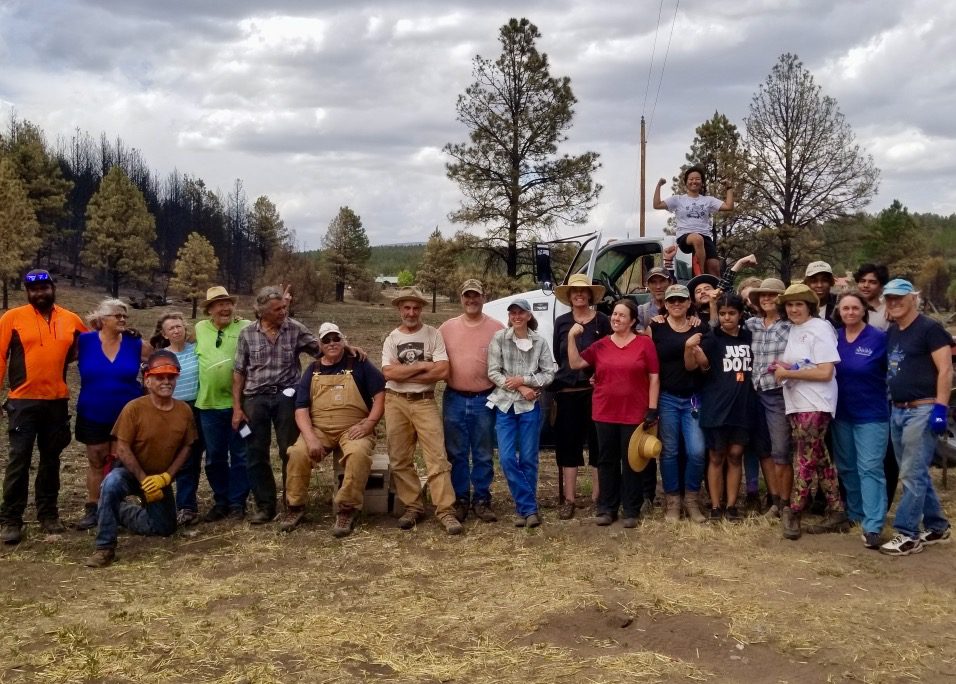
This effort was but one of countless acts of generosity that were donated to individuals, families and communities impacted by the fire. Food and clothing banks emerged. Homes opened their doors to long-term guests. Arenas were developed to host a wide range of critters from cats to cows. Musical bands raised money for victims of the fire. Free breakfasts were shared on porches. The beauty of such selfless acts of kindness brought tears to our eyes.
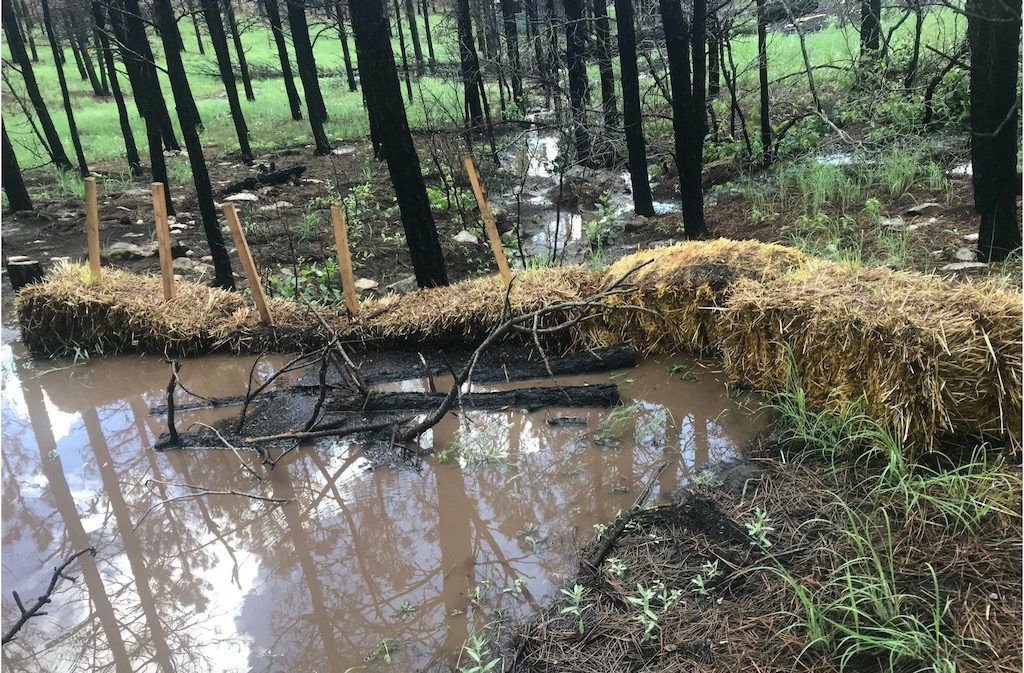
And then the rains came. And they came. And they came. We learned to watch the sky ever so closely. Rains in certain areas of the watershed foretold massive flooding arriving shortly. The early flooding brought such force. The river of debris (logs, rocks, ash, branches, roots) coursing down the canyon sounded like a freight train rumbling into the valley. Rains from another direction foretold roads being inundated with high water, ash, and mud, making passage in and out of the valley impossible. Later, when the water lowered, snowplows could be heard wrestling with the residue of the flood. It was (and still is as of this writing) a time of collective anxiety as the daily thunderstorms rolled through the area.
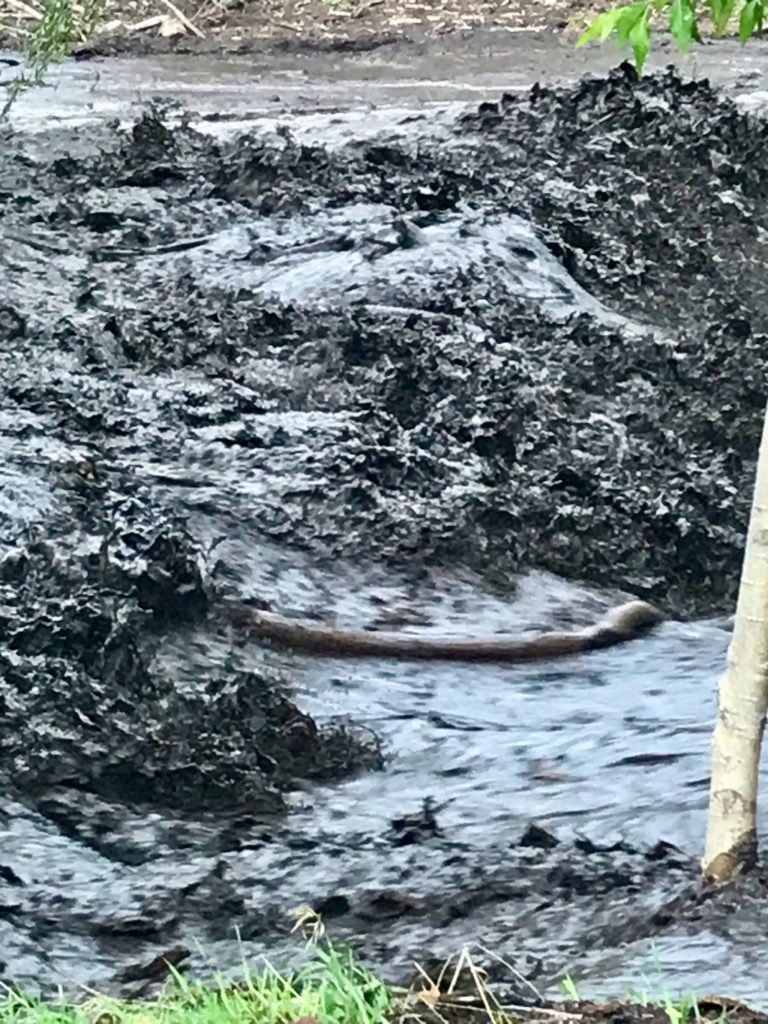
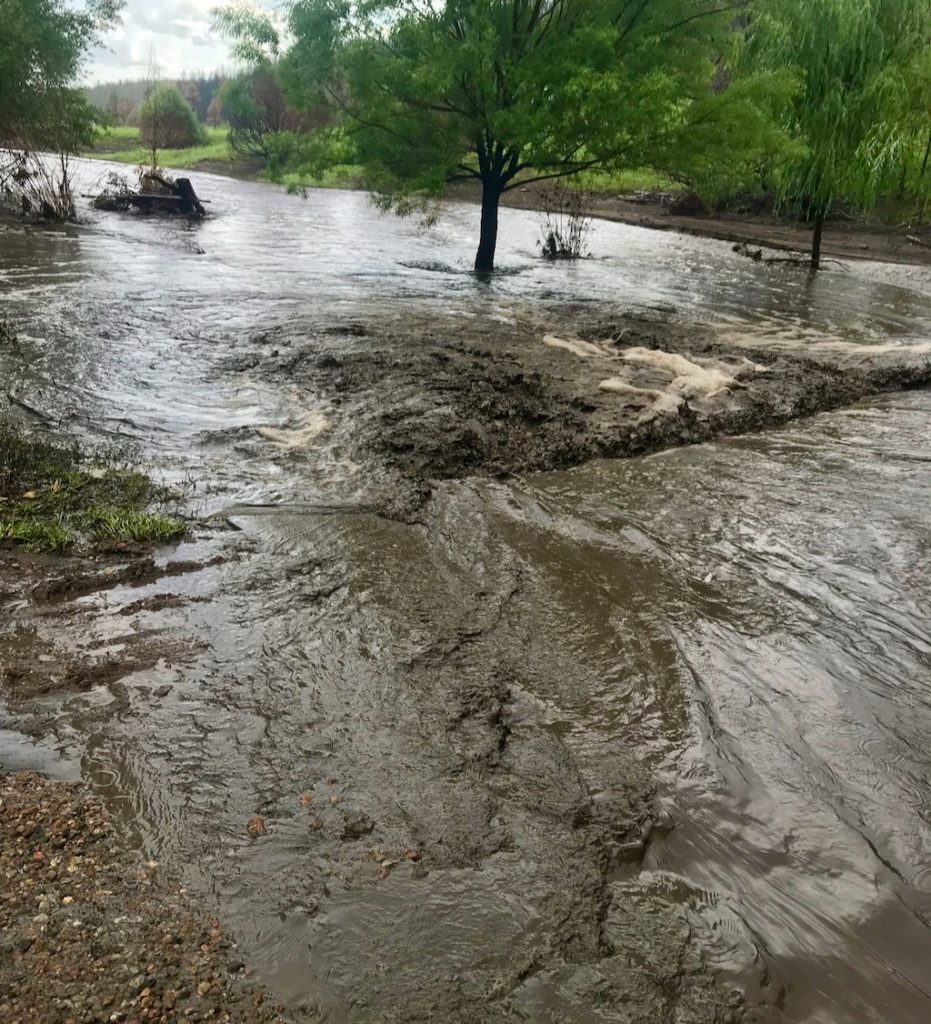
Homes in the scarred regions of the fire were being flooded. Ranch equipment, fences, gates, vehicles, sheds, pump houses, bridges, roads, hay barns all proved vulnerable to the extremes of the black waters gorging their way through the landscape.
To add to the trauma, just upstream from us, an eight-foot wall of water cascaded down the canyon, stripping a cabin from the hillside. Inside were three elders. Two bodies were discovered shortly after. For the next many days, our valley was filled with search and rescue volunteers, state police, helicopters, search dogs and anxiety. On the fourth day, the third body was discovered. It was a sobering time. Collective grief.
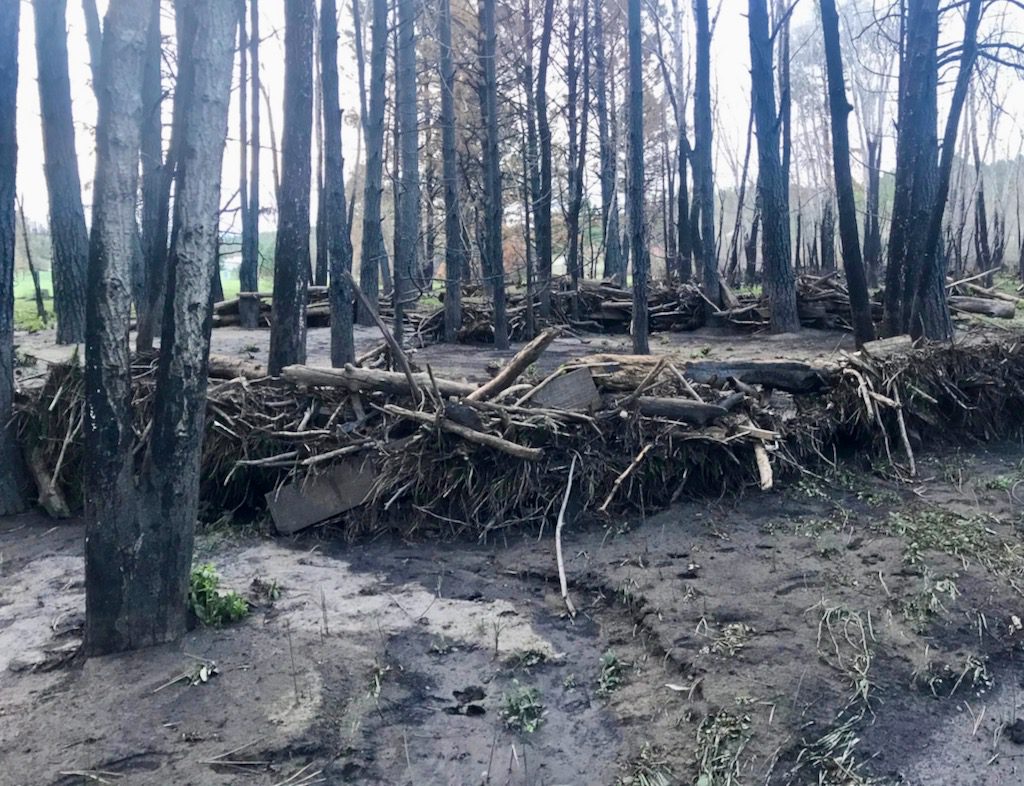
As I write this piece, the nearby town of Las Vegas, which has been the epicenter of much of this crisis, has twenty days of drinking water left. Monsoon rains have overwhelmed and polluted one of the main reservoirs. Water in the rivers is too turbid, carries too much ash and silt to be filtered. People in town are rightfully nervous as the deadline approaches. We are running out of options.
That is, “WE” are running out of options.
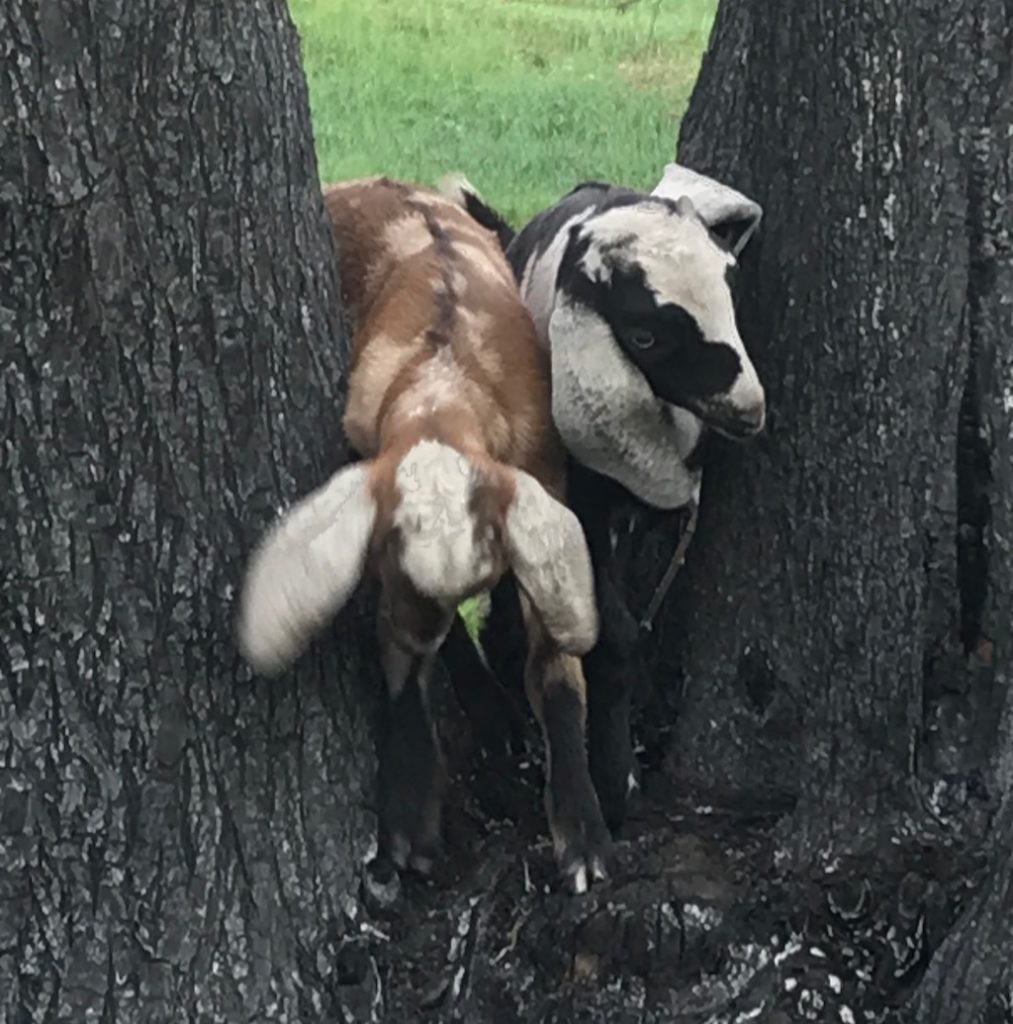
How does one integrate these climate-driven impacts? How do people catch their breath when each day demands attention to mitigate damage? Woods that provided income through forestry products are now crisp. Acequias overwhelmed by ash. Horses and cattle loose from miles of burned fences. Homes, many uninsured and generational, vanished. Children, weary of stress.
At the same time, how magnificent is the Earth’s response to the burn. Fields are as green and full as we have ever seen. Morning elk calls are heard once again. Connections with neighbors have deepened and new relationships formed. Our spring still flows clean and clear. Bees are buzzing. By carrying both grief and gratitude, we seem to be transforming at a rate matching the surrounding land.
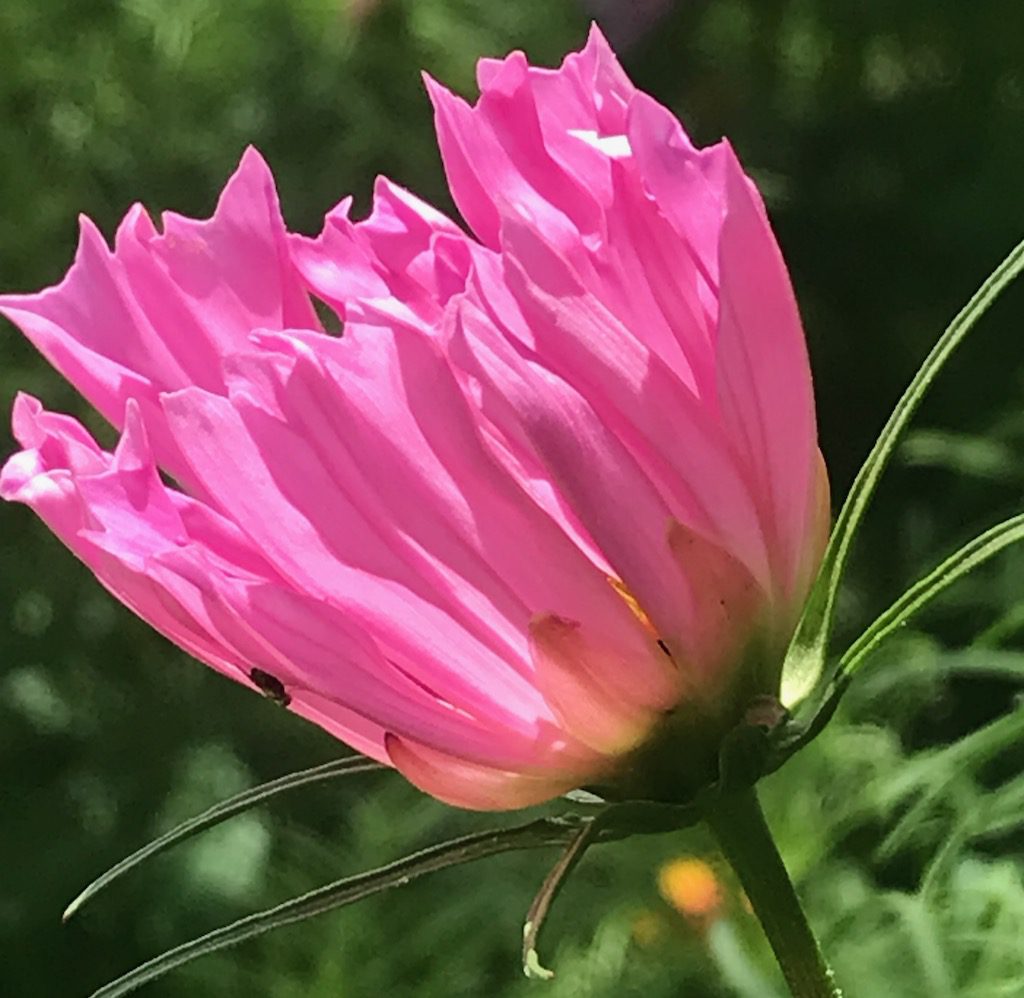
The Climate Crisis has become personal. As catastrophic events driven by a warming planet increase in number and severity, more and more of us are experiencing such vulnerabilities or know of acquaintances, friends and families who have been impacted. For ever so long, indigenous communities, marginalized populations and climate activists have been banging the wake-up gong, screaming to reverse the trajectory. It is too late to dodge the bullet we have self-inflicted. It is too late to be unaffected. Consequences are upon us.
But it is not too late for a collective awakening. It is not too late for a global engagement of carbon and greenhouse gas reduction. And it is definitely not too late to engage with all manner of efforts to secure locally produced renewable energy, to protect the waters that provide you with life, to make resilient local food supplies, to secure and protect diverse habitats and to get to know your neighbors.
It is not too late.
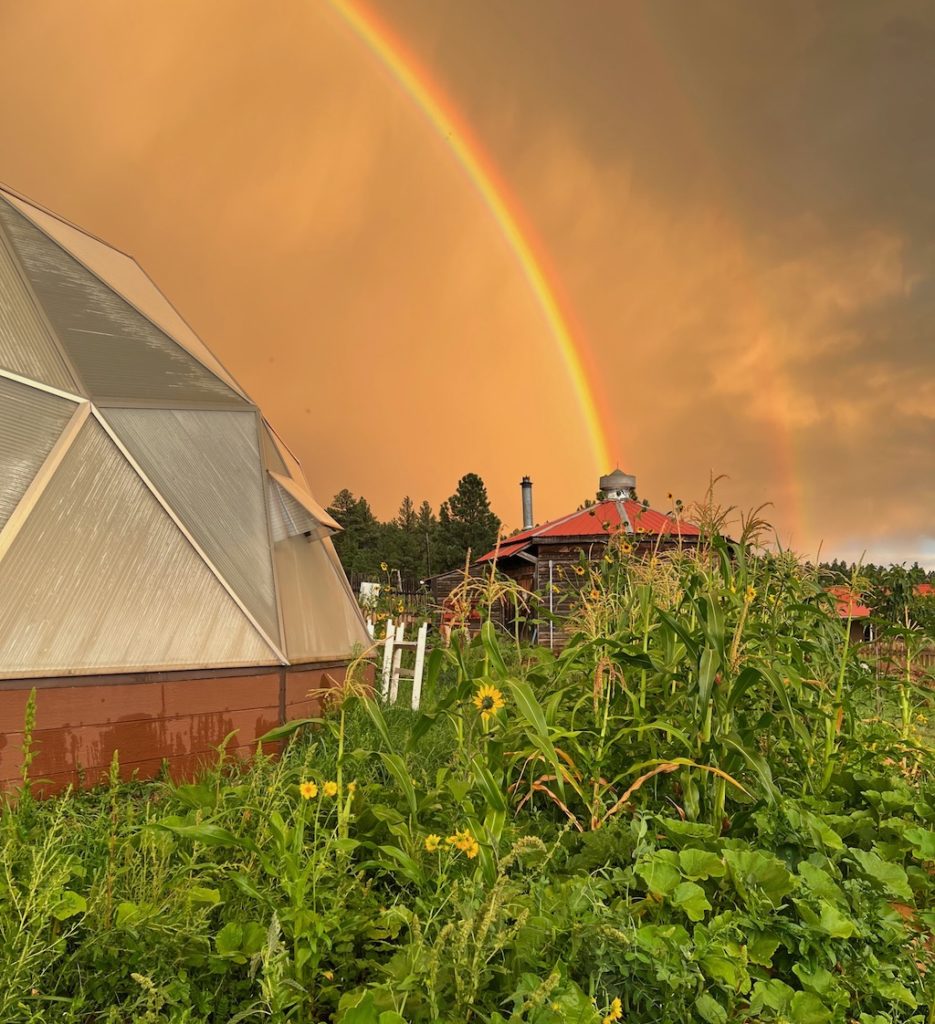
Great story John! So glad we could help out.
Much love to you and your community!
Thank you John for sharing grief and gratitude and this call to connection.
Great piece, John. Personal, poignant and insightful.
John this is the most powerful, heartfelt piece I have read in some time. You and Cindy are so strong and we are sending you love and light and a vision of a bright future.
¡Well put, hermano! So important that we not lose sight of what we can be grateful for; by doing so we hold out the hope that is necessary to get us through the trying times we are in and transition to a more sustainable future.
Dear John,
Thank you for writing and sharing this. Your article is so well written; brave, honest, harrowing and inspiring – generous in the sharing and important as a consciousness catalyst for all those thinking and feeling removed from the many different deadly manifestations of climate crisis occurring all over our beloved Mother Earth.
I am grieving and grateful with you all, and I send my love and support to you, Cindy, and all of your extended community. I wish I was near and could help!
Thank you for this poignant overview of Life in the TIme of Fire and Flood. For us, there will always be the Before and After. All these months later and your words evoke emotions and tears that flow like rivers now, still. Those whistling, gusting winds, blazing flames, thick smoke, and rushing waters have forever changed our landscape and our lives. Our innermost beings have and continue to be transformed. I will be sending this piece to friends and family to help them more fully comprehend this life changing experience. Your photos are great captures and so evocative. I remember saying,” This is a moment we will never forget” as we stood outside to watch the red blaze illuminate the ridge as we prepared to evacuate again, the second time that day. Such extremes we have lived through with the great good fortune to still see such beauty and bounty, however changed, on this land. Grief and Gratitude. Thank you.
Thank you so much for your words, Vicki. It is powerful medicine to be able to hold both those sentiments in our hearts. Thanks to you and John both.
Such extremes we are living. Thank you for sharing.
It’s so true. John’s story really brings that to light in a powerful way. Thank you for reading and for caring.